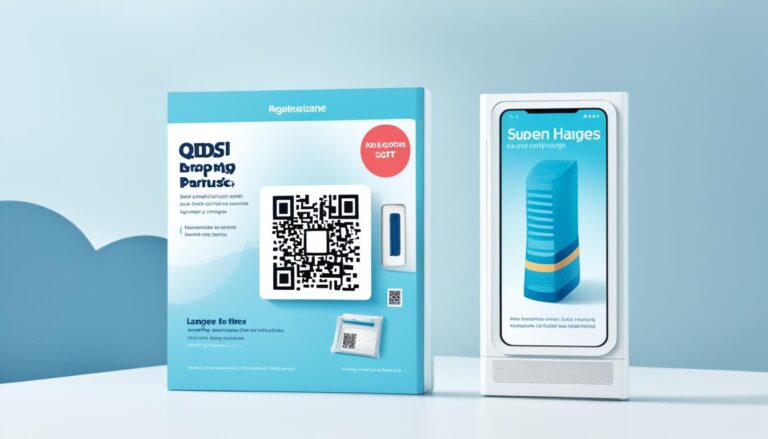Crafting Effective Print Ads: Techniques That Work
Did you know that businesses in the United States are expected to spend a staggering $24.34 billion on print advertising in 2019? Despite the rise of digital marketing, print advertising continues to be a powerful tool for reaching and engaging audiences. In this article, we will explore the key techniques that can make your print advertisements stand out and deliver impressive results.
Key Takeaways:
- Clearly define your objective for your print advertisement to align the content and design with your desired outcome.
- Understand your target audience to tailor your messaging and design elements to their desires and motivations.
- Keep the message of your print ad clear and concise, using attention-grabbing headlines and persuasive copy.
- Utilize eye-catching design elements such as vibrant colors, compelling images, and bold typography to capture attention.
- Emphasize a strong call to action (CTA) to prompt immediate response from your audience.
Clearly Define Your Objective
Before designing your print advertisement, it’s crucial to clearly define your objective. Whether you aim to increase brand awareness, promote a specific product or service, or drive sales, defining your objective will shape the content, layout, and overall design of your print ad to align with your desired outcome.
Having a clear objective allows you to develop effective print ads strategies and print advertising methods that resonate with your target audience. It enables you to craft a focused message and design elements that support your goals. Without a defined objective, your print ad may lack direction and fail to deliver the desired results.
When defining your objective, consider your target audience, their needs and preferences, and the action you want them to take after seeing your print ad. By understanding your audience and their motivations, you can tailor your print ad to capture their attention and compel them to take the desired action.
Remember, each print ad should have a clear, specific objective. If you’re running multiple campaigns with different goals, ensure that each print ad aligns with its respective objective. This targeted approach will maximize the effectiveness of your print advertising efforts.
To illustrate the importance of clearly defining your objective, consider the example below:
Example:
Suppose you own a boutique coffee shop in New York City and want to promote a new blend of coffee beans. Your objective is to increase sales and drive foot traffic to your shop. To achieve this, you create a print ad that showcases the richness and flavor of the coffee, along with a limited-time discount offer for customers who visit your shop and mention the ad. By defining your objective upfront, you can create a print ad that speaks directly to coffee lovers, enticing them to visit your shop and try the new blend.
Clearly defining your objective sets the foundation for a successful print advertising campaign. It ensures that your print ad effectively communicates your message, engages your target audience, and encourages them to take the desired action.
Next, we will explore how understanding your target audience can further enhance the effectiveness of your print ads. But first, take a moment to visualize the importance of defining your objective with this image:
Understand Your Target Audience
To create effective print ads, it’s essential to have a deep understanding of your target audience. By tailoring your messaging and design elements to resonate with their desires and motivations, you can create print advertisements that make a lasting impact. Connecting with your target audience is key to achieving success in print media advertising.
When developing your print ads, take the time to research and analyze your target audience. Consider their demographics, interests, and purchasing behavior. This information will guide you in crafting advertising examples that speak directly to your audience’s needs, capturing their attention and driving engagement.
By understanding your target audience, you can better align your print advertising strategies with their preferences and expectations, ensuring a higher level of receptivity to your message. This can ultimately lead to higher conversion rates and a stronger return on investment for your print media advertising campaigns.
Delve into Their Needs and Aspirations
To truly connect with your target audience, it’s important to delve deeper into their needs, aspirations, and pain points. Analyze their motivations and desires, and find ways to position your product or service as a solution or enhancement to their lives.
Consider conducting surveys, interviews, or focus groups to gain insight directly from your audience. These first-hand perspectives can help you identify unique selling points and print advertising examples that resonate with your target audience.
Once you have a comprehensive understanding of your audience, you can craft compelling print ads that address their exact needs, position your brand as the solution, and drive them to take action.
Keep the Message Clear and Concise
When it comes to print advertising, space is limited, making it crucial to keep your message clear and concise. To grab attention and convey your core message effectively, craft a compelling headline that instantly captures the reader’s attention. The headline should be concise yet powerful, highlighting the unique value proposition or key benefits of your product or service.
Within the body of your print ad, use persuasive copy that gets straight to the point. Focus on delivering the most important information in a concise manner without overwhelming the reader. Highlight the key features and benefits that differentiate your offering from the competition, ensuring that your message resonates with your target audience.
Remember, effective print advertising is all about efficiently communicating your message in a limited space. By keeping your content concise, you can ensure that readers understand and retain the key elements of your print ad.
Utilize Eye-Catching Design Elements
The visual appeal of your print ad is crucial in capturing attention and making a lasting impression. By utilizing eye-catching design elements, you can create ads that stand out from the competition and leave a lasting impact on your target audience.
One of the best print advertising practices is to use vibrant colors that attract attention and evoke emotions. Bold, contrasting colors can grab the viewer’s attention and make your ad visually striking. However, be sure to choose colors that align with your brand’s visual identity and convey the desired emotions.
Incorporating compelling images into your print ad is another powerful strategy. Images have the ability to convey messages quickly and evoke emotions in ways that words alone cannot. Choose high-quality, relevant images that align with your brand and effectively communicate your message.
Additionally, bold typography can make your print ad visually appealing and help emphasize key messages. Experiment with different font styles, sizes, and variations to create visual interest and draw attention to important information.
When designing your print ad, it’s important to ensure that the chosen design elements work together harmoniously. The overall design should align with your brand’s visual identity and effectively convey the intended message. By carefully considering and combining these design elements, your print ad can effectively capture attention and leave a lasting impression.
Emphasize a Strong Call to Action (CTA)
In the world of print advertising, a strong call to action (CTA) plays a vital role in driving immediate response from your audience. It serves as the catalyst that compels them to take the desired next step. Whether you want them to visit your website, call a phone number, or visit a physical store, it’s crucial to clearly state these actions in your print ads.
To make your CTA stand out, ensure that it is prominent and visually compelling. Use attention-grabbing design elements such as bold fonts, contrasting colors, or even a visually appealing button that prompts immediate action. The goal is to draw the reader’s attention to the CTA and make it irresistible to ignore.
When crafting your CTA, consider using persuasive language that conveys a sense of urgency or exclusivity. Phrases like “Limited time offer,” “Don’t miss out,” or “Act now” can create a sense of urgency and motivate your audience to respond immediately.
Additionally, consider incorporating a sense of reward or benefit into your CTA. People are more likely to take action when they perceive a tangible benefit. For example, instead of simply asking them to visit your website, you could emphasize the value they will gain by stating, “Visit our website to unlock exclusive discounts.”
Remember to keep your CTA concise and clear. Avoid overwhelming your audience with too many options or confusing instructions. A straightforward and simple CTA will yield better results.
By emphasizing a strong and compelling CTA in your print advertising, you increase the chances of driving meaningful engagement and conversions. Don’t underestimate the power of a well-crafted call to action in print marketing. It can be the difference between a reader simply admiring your ad and taking action to become a customer.
Select the Right Publications
Choosing the right publications is a critical step in executing a successful print advertising campaign. To effectively reach your target audience, it is essential to research and identify publications that align with their interests and demographics.
Consider factors such as circulation, readership, and editorial content to ensure that your print ad is placed in publications that have the potential to generate the desired impact. By selecting the right publications, you can maximize the visibility of your print ad and increase the chances of reaching your intended audience.
For more information on selecting the right publications for your print ad, check out this blog post on best practices for magazine advertising.
Monitor and Optimize
After your print ad is published, it’s essential to monitor its performance and gather data on its effectiveness. Tracking key metrics such as response rates, conversions, and brand awareness will provide valuable insights into the success of your print advertising campaign.
Use this data to make data-driven optimizations for future campaigns. Identify areas that can be improved and experiment with different strategies. By analyzing the performance of your print ads, you can refine your approach and create more effective print advertisements.
Remember to compare the results against your initial objectives to determine if your print ad has achieved the desired outcome. Use the insights gained from monitoring and optimization to inform your future print advertising efforts and enhance the overall effectiveness of your campaigns.
Monitoring and optimizing your print ads is crucial in ensuring their effectiveness and maximizing your return on investment. By continuously evaluating and refining your print advertising strategies, you can create impactful campaigns that resonate with your target audience and drive results.
Print Advertising in the United States
Did you know that businesses in the United States are expected to spend a staggering $24.34 billion on print advertising in 2019? Despite the rise of digital advertising, print media continues to be a strong and influential platform for marketing.
In particular, print advertising holds a special place in segments such as the luxury market and businesses with a physical presence. It offers a tangible and visually engaging way to showcase products and services to potential customers.
Let’s explore some print advertising examples that demonstrate the power and effectiveness of print media advertising:
- A luxury fashion brand featuring a full-page glossy advertisement in a high-end lifestyle magazine, showcasing their latest collection.
- A local restaurant placing an enticing print ad in a community newspaper, promoting a new menu item and offering a limited-time discount.
- A car dealership utilizing a full-color print ad in a car enthusiast magazine, highlighting the features and specifications of a new model.
These examples demonstrate how print media advertising can effectively reach and engage target audiences, providing a visually appealing and immersive experience that digital platforms sometimes overlook.
Print advertising is a valuable tool for businesses looking to make a lasting impression and create brand awareness. By leveraging the power of print media, companies can effectively capture the attention of their target audience and inspire action.
The Fundamentals of Creating a Print Advertisement
When it comes to effective print advertising, understanding your audience and implementing strategic print ads strategies and print marketing techniques are essential. By following these fundamentals, you can create compelling print advertisements that capture attention and drive desired actions.
1. Know Your Audience
Before you begin crafting your print advertisement, take the time to thoroughly understand your target audience. Consider their demographics, interests, needs, and desires. This knowledge will enable you to tailor your messaging to resonate with them on a deeper level.
2. Craft a Compelling Message
The message you convey in your print ad should be clear, concise, and impactful. Consider the unique selling points of your product or service and highlight them in a way that communicates value to your audience. Use persuasive copywriting techniques to engage readers and draw them in.
3. Grab Attention with Headlines and Copy
Capturing attention is crucial in print advertising. Use attention-grabbing headlines that pique curiosity or evoke emotions. Your headlines should work in harmony with your copy, which should be concise but persuasive. Focus on the benefits and solutions you offer to entice your audience.
4. Incorporate Eye-Catching Visuals
The visual elements of your print ad play a significant role in attracting attention. Utilize high-quality images, vibrant colors, and visually appealing design elements that reflect your brand’s identity. Ensure that your visuals align with your message and evoke the desired emotions in your audience.
5. Follow Design Principles
Designing an effective print advertisement requires adherence to fundamental design principles. Consider the hierarchy of information, balance, typography, and whitespace. A well-designed ad will enhance readability, draw attention to key elements, and create a cohesive visual experience.
Image: Visual representation of effective print advertising strategies
6. Include Strong Call to Action (CTA)
Every print ad should include a clear and compelling call to action (CTA). State specifically what action you want readers to take, whether it’s visiting your website, calling a phone number, or visiting your store. Make your CTA prominent and create a sense of urgency to encourage immediate response.
7. Choose the Right Publications
Selecting the right publications is crucial in ensuring your print ads reach the intended audience. Research and identify publications that align with your target audience’s interests and demographics. Consider factors such as circulation, readership, and editorial content to maximize the effectiveness of your print ad.
8. Evaluate and Optimize
Once your print ads are published, it’s important to track their performance and gather data on their effectiveness. Monitor key metrics such as response rates, conversions, and brand awareness to assess the success of your ads. Use these insights to optimize future campaigns and improve your overall print advertising strategy.
By implementing these fundamentals, you can create effective print advertising campaigns that engage your audience, convey your message, and inspire action. Invest in thorough planning, thoughtful execution, and continuous optimization to make the most out of your print advertisements.
Source: The Revitalization of Print Advertising
Conclusion
Print advertising continues to be a powerful and effective marketing tool when executed strategically. By employing the right print advertising tips such as clearly defining your objectives, understanding your target audience, keeping the message concise, utilizing eye-catching design elements, emphasizing a strong call to action, selecting the right publications, and monitoring and optimizing your print ads, you can create impactful campaigns that engage, inform, and inspire action.
Effective print advertising requires a thoughtful approach that considers the unique advantages of the medium. By defining your objectives from the start, you can align every element of your print ad towards achieving those goals. Understanding your target audience is crucial in crafting a message that resonates with them and drives them to take action. Utilizing eye-catching design elements and a strong call to action ensures that your print ad grabs attention and prompts a response. Selecting the right publications to reach your audience, and continuously monitoring and optimizing your ads based on data, will further enhance the effectiveness of your campaigns.
In the ever-evolving world of marketing, print advertising stands as a proven way to cut through the digital noise and make a lasting impression. It provides a tangible and visually engaging experience that connects with consumers on a deeper level. When combined with a well-executed strategy and the right print advertising techniques, such as those outlined in this article, print ads can drive results and deliver a high return on investment. So, don’t overlook the power of print advertising in your marketing mix – incorporate these print ads strategies to create compelling campaigns that captivate your audience and drive business success.
FAQ
What is the first step in creating an effective print ad?
Clearly define your objective to shape the content, layout, and overall design of your print ad.
How can I ensure that my print ad resonates with my target audience?
Tailor your messaging and design elements to align with your target audience’s desires and motivations.
How should I craft the message for my print ad?
Keep the message clear and concise, focusing on the key benefits or value proposition of your product or service.
What are some design elements that can make a print ad stand out?
Utilize eye-catching design elements such as vibrant colors, compelling images, and bold typography.
How important is a strong call to action in a print ad?
A strong call to action is vital in driving immediate response from your audience.
How do I choose the right publications for my print ad?
Research and identify publications that align with your target audience’s interests and demographics.
Why is it important to monitor and optimize my print ads?
Monitoring the performance of your print ads can help you assess their effectiveness and make data-driven optimizations for future campaigns.
What is the current state of print advertising in the United States?
Despite the popularity of digital advertising, businesses in the United States are still expected to spend billions on print advertising in 2019, especially in segments such as the luxury market and businesses with a physical presence.
What are the fundamental techniques for creating effective print advertisements?
The fundamental techniques include clearly defining your objectives, understanding your target audience, keeping the message concise, utilizing eye-catching design elements, emphasizing a strong call to action, selecting the right publications, and monitoring and optimizing your print ads.







